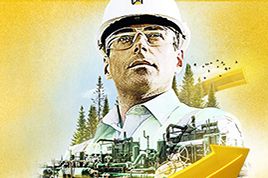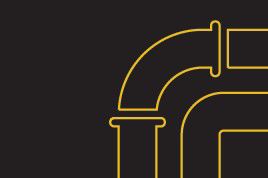

Sign In
Welcome! Sign In to personalize your Cat.com experience
If you already have an existing account with another Cat App, you can use the same account to sign in here
Register Now
One Account. All of Cat.
Your Caterpillar account is the single account you use to log in to select services and applications we offer. Shop for parts and machines online, manage your fleet, go mobile, and more.
Account Information
Site Settings
Security
Driving Operational Efficiency:
Fresh Insights to Increase Safety and Reduce Downtime
Navigating Safety Risks Through Continuous Training
By Danielle Foelber | Posted October, 2023
Parts & Services
-
Cat® Engine Lifecycle
Learn More -
Customer Value Agreements for Oil & Gas
Learn More -
Digital Services for Oil & Gas
Learn More -
Gas Compression Training
Learn More -
Finance and Warranty for Oil & Gas
Learn More -
Parts and Repair Options for Oil & Gas
Learn More -
Cat® Reman Solutions for Oil & Gas
Learn More
Sustainability
About
Worksite safety and operational efficiency are foundational elements of success in the oil and gas industry. Habitual maintenance practices underpin both in today’s oil patch. While training is essential, digital tools complement workers’ efforts to inform them about unseen issues that can force equipment offline.
Proper Protocols for Best Results
Proper training can have a direct, positive impact on efficiency gains. There are common misperceptions about training that many workers may believe. New crew members may feel that one quick training session is enough, while industry veterans may feel training isn’t necessary as they’ve worked on equipment for many years. In reality, both junior and seasoned workers require continuous training to ensure they follow best practices for regular maintenance routines to maximize efficiencies, create a safe environment and ensure the longevity of the equipment they handle.
In-person training sessions are immensely valuable, as personnel can ask skilled technicians questions in real-time to understand the best practices for operating a specific piece of equipment. Once the training session ends, however, that new knowledge can quickly fade. Easy-access reminders, such as flash cards or stickers on equipment, can refresh the information trainers imparted during a session. These visual cues help bring proper protocols to mind to ensure equipment is optimally operated and sustained.
Workers that have been in the oil field for several years may believe training isn’t applicable for them. However, training is needed for experienced personnel too. If the person who trained them on a pump years ago didn’t educate them on correct maintenance methods, they will continue to repeat the incorrect protocol they learned. Giving these seasoned professionals the information to perform a task the right way with the right tools and the right process will help improve operations.
Leveraging Technology
Preventative maintenance tools are especially helpful to workers, as they amplify their abilities to maintain the equipment for maximum performance and uptime, as catastrophic failures and downtime may be prevented. Sensors installed on equipment and the algorithms that interpret the data those sensors collect are invaluable. Digital solutions, such as the Cat® Pump Electronic Monitoring System (PEMS), observe the condition of a pump through sensors that are attached to both the fluid end and power end. Precise algorithms analyze the data the sensors collect and report failure modes and warnings about key issues such as cavitation and leaking.
A preventative maintenance plan can have an important impact on equipment longevity to produce greater operational efficiencies. Increased longevity can help boost uptime and lower total cost of ownership (TCO), impacting profitability and competitiveness. Investing a few minutes to adjust a pump based on PEMS recommendations ultimately saves money and time.
Review Protocols and Available Solutions to Maximize Efficiencies
Continuously reviewing and refining maintenance processes and the tools that support them fosters success in the oil field. Ensuring workers are trained to properly operate and maintain equipment is a crucial first step. Layering digitalized preventative maintenance solutions on workers’ manual efforts empowers them to extend the longevity of equipment while reducing costs and safety hazards to carve out greater efficiencies.
For more insights to help increase operational efficiencies, listen to The Energy Pipeline Podcast, visit https://www.cat.com/the-energy-pipeline.html
Related Content
-
The Cat® Blog
The Cat Blog is dedicated to sharing expert advice and industry knowledge to help our customers do the work better. Read our customer stories, tips and resources.
Learn More -
Oil & Gas
Discover Caterpillar oil and gas solutions and applications. Designed to be durable and efficient, our oil and gas generators are prime movers that deliver low operating costs.
Learn More -
Digital Maintenance Revolution
Jordan and Adriana interview Matt Morse at Caterpillar to learn more about utilizing technology for training, safety, and maintenance.
Learn More


